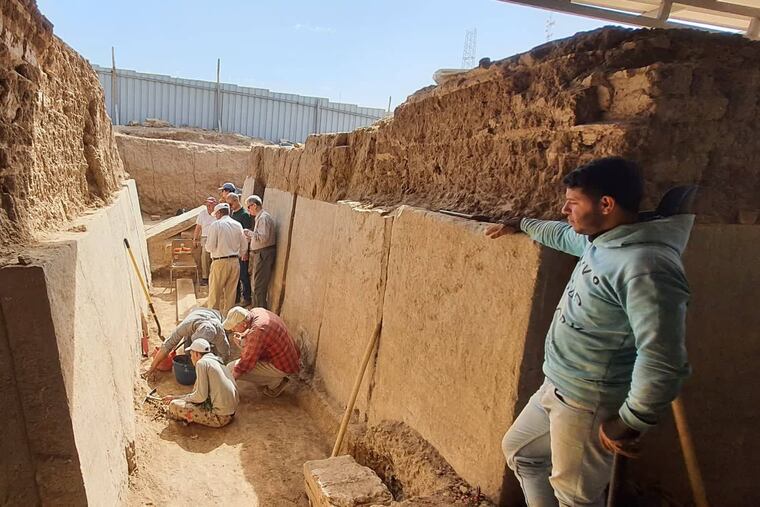Iraqi and Penn archaeologists uncover ancient carved reliefs that have survived ISIS attacks
Marble works from beneath Mosul’s Mashki Gate are the first Assyrian reliefs to have been uncovered in 75 years.

In what researchers are calling “one of the biggest discoveries since the 19th century,” a team of archaeologists from Iraq and Penn Museum have uncovered seven intricately carved marble reliefs, pulled from the ruins beneath Mashki Gate in Iraq’s Mosul, which was reduced to rubble by ISIS militants in 2016. The Mashki Gate was one of the monumental gates of Nineveh, the oldest and the most populous city of the Assyrian Empire.
The reliefs, undamaged by the ISIS destruction, were discovered earlier last month near the gate in an excellent state of preservation, researchers said.
The finely preserved reliefs, which depict scenes of warfare, mountains, grape vines, and palm trees, date back to time of King Sennacherib, an Assyrian king who ruled Nineveh from 705 to 681 B.C. Known for his military campaigns, including one referenced in the Bible, Sennacherib constructed 18 gates surrounding the city. The Mashki Gate, known as the “Gate of the Watering Places,” provided direct access to the Tigris River.
“These are the first Assyrian reliefs to have come out of the ground in 75 years at least,” said Penn associate professor Richard L. Zettler, associate curator-in-charge of the museum’s Near East section.
Zettler was part of the team of researchers and archaeologists who unearthed the reliefs and are working to reconstruct the ancient gate with the support of the ALIPH Foundation.
“For an archaeologist, a discovery of this magnitude is an honor, a serious responsibility,” said field director Michael D. Danti, director for Penn’s Iraq Heritage Stabilization Program. “In a way, Mashki Gate is a symbol of international hope and cross-cultural collaboration. Out of the ashes, a phoenix rises.”
The Gate had been reconstructed in the 1970s by the Nineveh Inspectorate of Iraq’s State Board of Antiquities and Heritage. Located on the main north-south highway on the east side of the Tigris River — and easily visible from the west side — the gate symbolizes Mosul’s long history and continues to be an important shared site for Christians, Jews, and Muslims.
Militants bulldozed the gate in 2016, part of a campaign to erase emblems of Iraq’s Assyrian heritage.
“This discovery adds new data and ultimately advances the understanding of Neo-Assyrian history in ancient Mesopotamia,” said Zettler.
The ancient panels will remain in Iraq, and Penn is backing plans for building a visitor center at Nineveh and creating a park to showcase the area’s cultural resources. The goal is to conserve ancient Nineveh as a massive archaeological site within a modern city, and moving it toward becoming a UNESCO World Heritage site to ensure its future preservation, as well as to promote sustainability for the people of East Mosul.